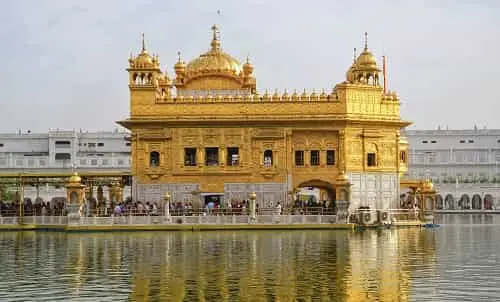The Golden Temple, also known as Sri Harmandir Sahib, stands as a radiant symbol of Sikh spirituality and unity in Amritsar, India. What sets it apart is its stunning amalgamation of architectural and spiritual significance. The temple’s foundation is at a level lower than the surrounding area, symbolizing humility. It’s adorned with a gilded exterior, and the gold was donated by Maharaja Ranjit Singh, enhancing its resplendence. Beneath its sanctum lies the Sarovar, a sacred pool, which not only serves as a site for ritual cleansing but also harbors a unique phenomenon: the temple’s reflection in the water appears to create a shimmering, glowing aura, adding to its mystique.
1. Sri Harmandir Sahib, often known as the “Golden Temple,” is a stunning religious site in Amritsar, India.
2. Many Sikhs go there every day to worship the “Guru Granth Saheb.”
3. It is a key Sikh destination and is visited by millions of people every year throughout the world
4. Sikhism and the “Golden Temple” were created in an era when caste prejudice was known to be a big issue in our nation.
5. At this time, the Mughal Empire became the dominant power. Sikhism was created in part to ward off foreign invaders like the Mughals.
6. One of the main reasons this religion was founded was to provide equality to all people, regardless of their status, religion, caste, etc.
7. It is believed that the renowned Sage Valmiki wrote the sacred Ramayana in Amritsar.
8. A large number of individuals also believe that Rama and Sita spent their fourteen-year exile at Amritsar, which is presently the hub of Sikhism.
9. Before approaching the shrine grounds, both male and female guests must cover their heads.
10. During the day, the Guru Granth Sahib is housed in the Golden Temple, while at night, it is stored in the Akal Takht, also known as the Eternal Throne.

Rahul Kumar is a passionate educator, writer, and subject matter expert in the field of education and professional development. As an author on CoursesXpert, Rahul Kumar’s articles cover a wide range of topics, from various courses, educational and career guidance.




